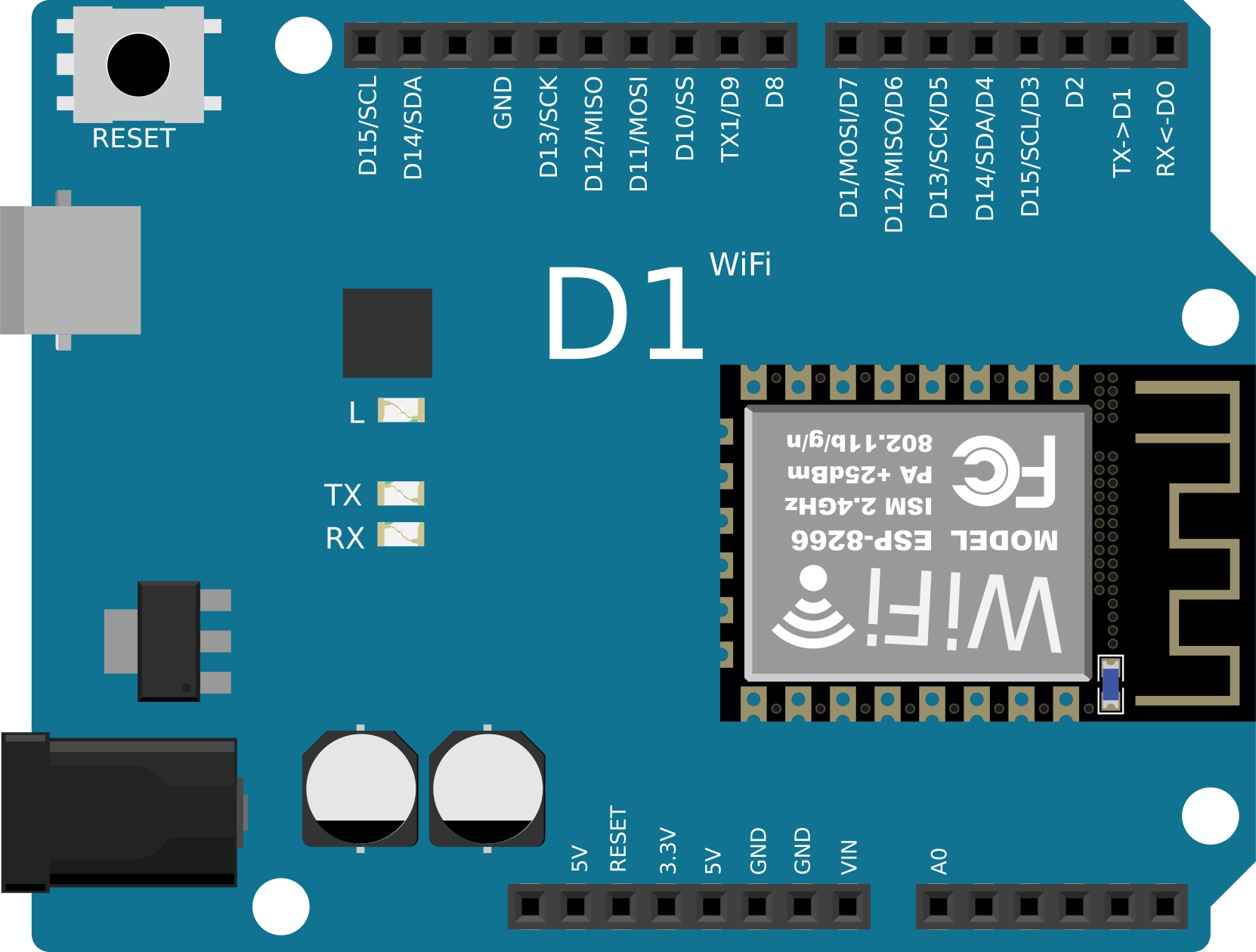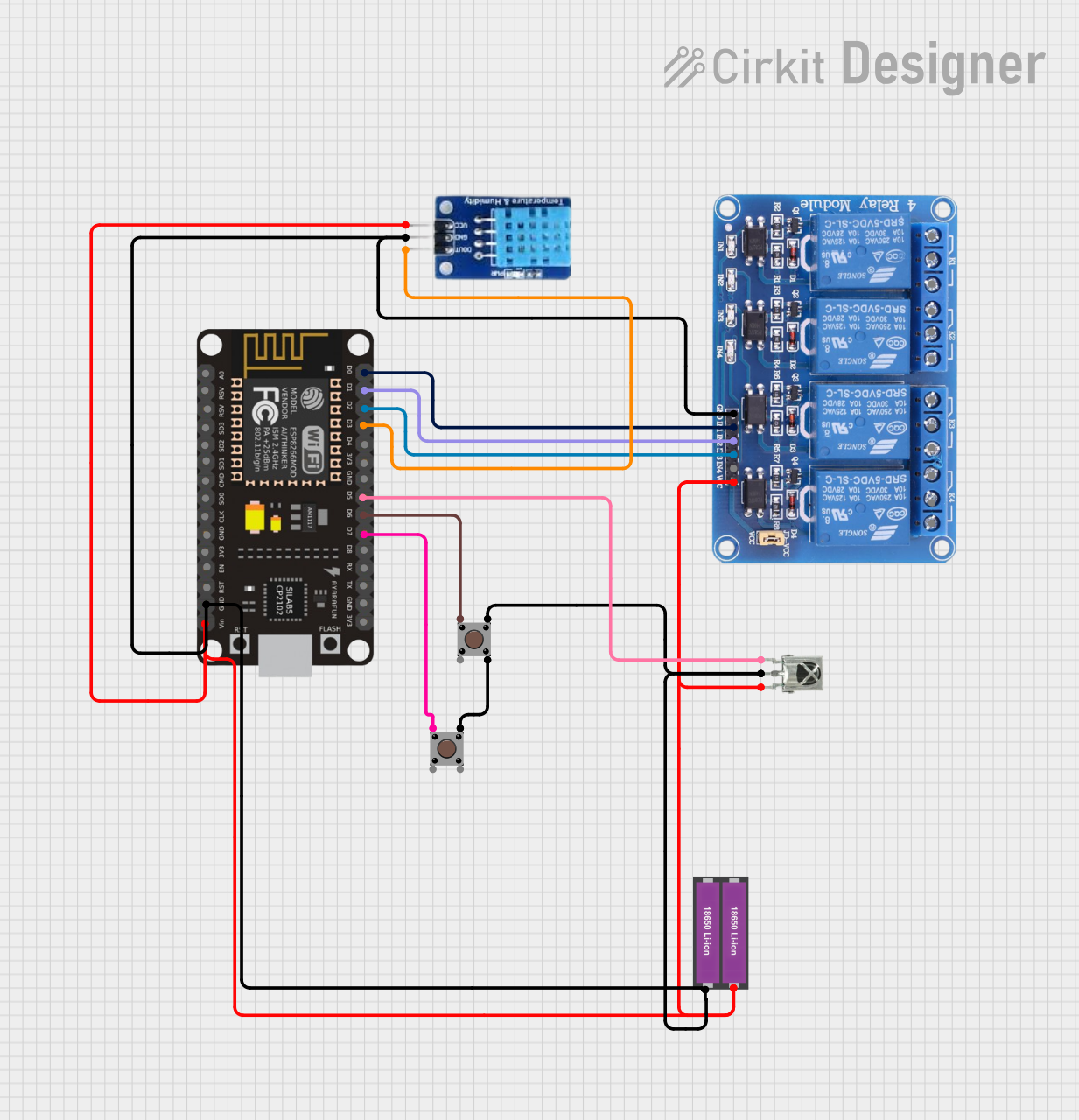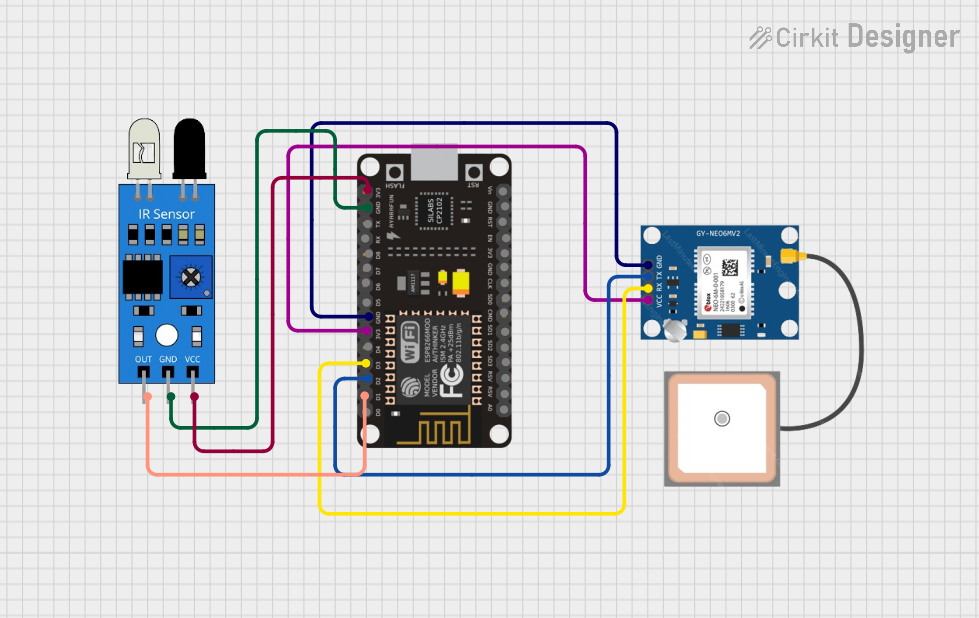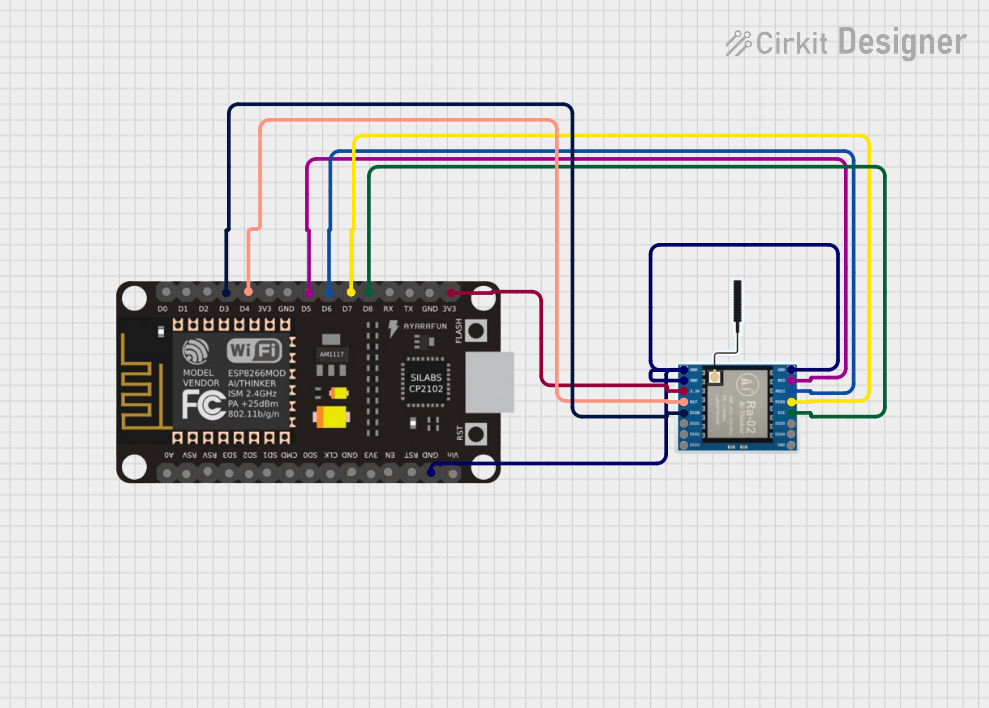
How to Use WeMOS D1 Esp8266: Examples, Pinouts, and Specs

 Design with WeMOS D1 Esp8266 in Cirkit Designer
Design with WeMOS D1 Esp8266 in Cirkit DesignerIntroduction
The WeMOS D1 ESP8266 is a compact development board built around the powerful ESP8266 Wi-Fi module. It combines a microcontroller with built-in Wi-Fi capabilities, making it an excellent choice for IoT (Internet of Things) projects. The board features a USB interface for easy programming and GPIO pins for connecting sensors, actuators, and other peripherals. Its compatibility with the Arduino IDE makes it beginner-friendly while still offering advanced features for experienced developers.
Explore Projects Built with WeMOS D1 Esp8266

 Open Project in Cirkit Designer
Open Project in Cirkit Designer
 Open Project in Cirkit Designer
Open Project in Cirkit Designer
 Open Project in Cirkit Designer
Open Project in Cirkit Designer
 Open Project in Cirkit Designer
Open Project in Cirkit DesignerExplore Projects Built with WeMOS D1 Esp8266

 Open Project in Cirkit Designer
Open Project in Cirkit Designer
 Open Project in Cirkit Designer
Open Project in Cirkit Designer
 Open Project in Cirkit Designer
Open Project in Cirkit Designer
 Open Project in Cirkit Designer
Open Project in Cirkit DesignerCommon Applications and Use Cases
- Home automation systems
- IoT devices and smart appliances
- Wireless sensor networks
- Remote monitoring and control
- Prototyping Wi-Fi-enabled projects
Technical Specifications
Key Technical Details
| Specification | Value |
|---|---|
| Microcontroller | ESP8266 |
| Operating Voltage | 3.3V |
| Input Voltage | 7-12V (via barrel jack) |
| Digital I/O Pins | 11 |
| Analog Input Pins | 1 (10-bit resolution) |
| Flash Memory | 4MB (varies by model) |
| Clock Speed | 80 MHz / 160 MHz (configurable) |
| Wi-Fi Standard | 802.11 b/g/n |
| USB Interface | Micro-USB |
| Dimensions | 68.6mm x 25.6mm |
Pin Configuration and Descriptions
| Pin Name | Description |
|---|---|
| D0-D8 | Digital GPIO pins (can be used for input/output, PWM, I2C, SPI, etc.) |
| A0 | Analog input pin (0-3.3V, 10-bit resolution) |
| G | Ground pin |
| 3V3 | 3.3V power output |
| 5V | 5V power output (from USB or external power source) |
| RX | UART Receive pin (used for serial communication) |
| TX | UART Transmit pin (used for serial communication) |
| RST | Reset pin (active low, used to reset the board) |
Usage Instructions
How to Use the Component in a Circuit
- Powering the Board:
- Use a Micro-USB cable to power the board and upload code.
- Alternatively, supply 7-12V via the barrel jack or 3.3V directly to the 3V3 pin.
- Connecting Peripherals:
- Use the GPIO pins (D0-D8) to connect sensors, actuators, or other devices.
- The A0 pin can be used for analog sensors (ensure the input voltage does not exceed 3.3V).
- Programming the Board:
- Install the Arduino IDE and add the ESP8266 board package via the Board Manager.
- Select "WeMOS D1 R1" or "WeMOS D1 Mini" as the board type, depending on your model.
- Write your code and upload it using the Micro-USB connection.
Important Considerations and Best Practices
- Voltage Levels: The GPIO pins operate at 3.3V. Avoid applying 5V directly to the pins to prevent damage.
- Wi-Fi Antenna: Ensure the onboard Wi-Fi antenna is not obstructed for optimal signal strength.
- Power Supply: If using power-hungry peripherals, consider an external power source to avoid overloading the USB port.
- Reset and Flash Buttons: Use the reset button to restart the board and the flash button for manual firmware uploads.
Example Code for Arduino IDE
The following example demonstrates how to connect the WeMOS D1 ESP8266 to a Wi-Fi network and control an LED connected to GPIO pin D1.
#include <ESP8266WiFi.h> // Include the ESP8266 Wi-Fi library
const char* ssid = "Your_SSID"; // Replace with your Wi-Fi network name
const char* password = "Your_Password"; // Replace with your Wi-Fi password
const int ledPin = D1; // GPIO pin where the LED is connected
void setup() {
pinMode(ledPin, OUTPUT); // Set the LED pin as an output
Serial.begin(115200); // Start serial communication at 115200 baud
// Connect to Wi-Fi
Serial.print("Connecting to Wi-Fi");
WiFi.begin(ssid, password);
while (WiFi.status() != WL_CONNECTED) {
delay(500);
Serial.print(".");
}
Serial.println("\nWi-Fi connected!");
Serial.print("IP Address: ");
Serial.println(WiFi.localIP()); // Print the board's IP address
}
void loop() {
digitalWrite(ledPin, HIGH); // Turn the LED on
delay(1000); // Wait for 1 second
digitalWrite(ledPin, LOW); // Turn the LED off
delay(1000); // Wait for 1 second
}
Troubleshooting and FAQs
Common Issues and Solutions
The board is not detected by the computer:
- Ensure the correct USB driver is installed (e.g., CH340 driver for some models).
- Try a different USB cable or port.
Wi-Fi connection fails:
- Double-check the SSID and password in your code.
- Ensure the Wi-Fi network is within range and not using unsupported security protocols.
GPIO pins not working as expected:
- Verify the pin mode is correctly set in the code (e.g.,
INPUT,OUTPUT). - Check for conflicting pin assignments in your code.
- Verify the pin mode is correctly set in the code (e.g.,
Upload errors in Arduino IDE:
- Ensure the correct board and port are selected in the IDE.
- Press and hold the flash button while uploading to force the board into programming mode.
FAQs
Can I use 5V sensors with the WeMOS D1 ESP8266?
Yes, but you will need a level shifter or voltage divider to step down the signal to 3.3V.What is the maximum current output of the GPIO pins?
Each GPIO pin can source or sink up to 12mA.Can I use the board without Wi-Fi?
Yes, the ESP8266 can function as a standalone microcontroller without using its Wi-Fi features.How do I update the firmware?
Use the Arduino IDE or a dedicated flashing tool to upload new firmware via the USB interface.
This documentation provides a comprehensive guide to using the WeMOS D1 ESP8266, ensuring a smooth experience for both beginners and advanced users.